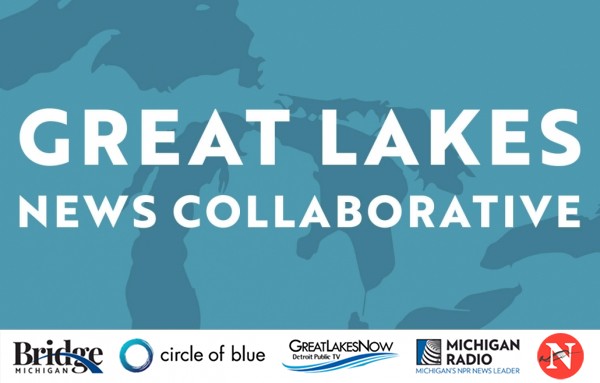Fresh, August 6, 2024: Wisconsin Lawmakers Push for Apostle Islands Lakeshore to Become State’s First National Park
August 6, 2024
Fresh is a biweekly newsletter from Circle of Blue that unpacks the biggest international, state, and local policy news stories facing the Great Lakes region today. Sign up for Fresh: A Great Lakes Policy Briefing, straight to your inbox, every other Tuesday.
— Christian Thorsberg, Interim Fresh Editor
This Week’s Watersheds
- Several tribes and other local partners in northeastern Minnesota have received a NOAA grant to center Indigenous knowledge in flood resiliency planning efforts.
- In southeastern Michigan, 14 community intake sites will receive state funding to maintain early-detection water quality monitoring.
- Apostle Islands National Lakeshore, comprising 69,000 acres of Lake Superior shoreline, may become Wisconsin’s first national park.
- Yet another oil spill in Montreal’s St. Lawrence River has been discovered, less than two weeks after cleanup efforts for another incident ended.
The Icelandite Coastal Fen Scientific and Natural Area, Minnesota’s newest nature preserve, opens on the northern shores of Lake Superior.
“You’re left with this totally unique and neat boggy habitat filled with sphagnum mosses, lichens, vascular plants and carnivorous plants all right behind this rocky beach.” — Pat Collins, conservation program manager for the Minnesota Land Trust.
After first being recommended for protection in 1988, the 25-acre ecosystem — located 11 miles northeast of Grand Marais, on Lake Superior — has become Minnesota’s newest protected swath of land. In 2021, the state Department of Natural resources purchased the area from the state Department of Transportation for $300,000, a sum funded by both the Nature Conservancy and the Great Lakes Restoration Initiative, Minnesota Public Radio reports.
According to the Star Tribune, the area is home to two coastal wetlands called fens, carnivorous plants, and billion-year-old rocks, a pebble beach, and a hiking trail.
Fresh from the Great Lakes News Collaborative
- TC Energy executives celebrate ‘ground game’ for Ontario pumped storage project — The Narwhal
- A Decade After Crisis, Algal Blooms Persist — Great Lakes Now
- Michigan joins federal program that collects native flora and champions restoration — Michigan Public
-
On Lake Michigan, a coal-fired steamship and ferry eyes a clean-energy future — Bridge Michigan
Bridge Michigan, Circle of Blue, Great Lakes Now at Detroit Public Television, Michigan Public and The Narwhal work together to report on the most pressing threats to the Great Lakes region’s water. This independent journalism is supported by the Charles Stewart Mott Foundation. Find all the work here.
Bill Proposing Apostle Islands National Park Designation Met With Mixed Reactions
In an effort to boost state tourism, Rep. Tom Tiffany of Wisconsin has introduced a new bill in Congress that would designate the Apostle Islands National Lakeshore — a collection of 21 islands in Lake Superior, on the state’s northern coast — as a national park. It would be Wisconsin’s first.
If the change takes place, the Apostle islands should see an uptick in visitors. A study of eight national monuments that received a national park designation showed that visitor numbers increased by 21 percent on average, Wisconsin Public Radio reports. Bill supporters say more tourists will raise local revenues and create hundreds of local jobs.
But that same logic is reason for concern for the bill’s critics, who worry that the region lacks the infrastructure to support an influx of people.
There are also environmental and subsistence concerns. Congress has permitted oil and gas exploration or extraction at sites on nearby Sand Island, which, as part of the bill, would receive national preserve status. The island is also open to hunting, according to the treaty rights of Wisconsin’s Ojibwe Tribes.
Tiffany has said he would like the park to “elevate” the Tribes’ history, though there remain local concerns over subsistence opportunities if the area’s classification changes.
In the News
Flooding Resilience: The National Oceanic and Atmospheric Administration (NOAA) has granted $1.85 million to a consortium of project partners in northeastern Minnesota to establish regional resilience to extreme weather and flooding events near the shores of Lake Superior, WDIO reports. Among other collaborators, St. Louis County will be working with the Arrowhead Regional Development Commission and several bands of Lake Superior Chippewa to protect local resources during high precipitation events, and incorporate local and Indigenous knowledge into planning efforts. The Duluth News Tribune reports that recent flooding in June due to heavy rainfall cost the region roughly $62 million in damages.
Pointe-aux-Trembles: Less than two weeks after 19,000 liters of water and oil were recovered from the St. Lawrence River following a motor oil spill, a second spill has been discovered, CBC reports. The cause, still unknown, continues to be investigated, though officials say they have found the land-based pipe from which the spill originated. This century, the St. Lawrence has been a hotspot for incidents — the river’s most recent long-term count, from 2002 to 2012, revealed 334 oil spills during that span.
Looking Ahead
Southeast Michigan Drinking Water Monitoring Program: Half of Michigan’s population depends on water treated in an 80-mile region between Lake Erie and Lake Huron, the Port Huron Times Herald reports. Now, 14 community water intakes in that area — including in Port Huron, Marysville, St. Clair, Marine City, and Algonac, as well as East China and Ira townships — will receive $1.5 million in state funding to maintain physical water quality monitors at these intakes, which will alert officials to pollutants that may pose a public health risk.
Upcoming Events
August 9 — American Great Lakes Ports Association 2024 Annual Conference — learn more
September 9 – 10 — Great Lakes-St. Lawrence Legislative Caucus Annual Meeting — learn more
Other News
Soo Locks: Sens. Gary Peters and Debbie Stabenow of Michigan say they have secured $450 million in federal funding for the next fiscal year to complete the Soo Locks project, which will increase the state’s shipping capacity and cargo flow throughout the Great Lakes, SooLeader reports.
Toledo, 10 Years Later: Ten years after a toxic algal bloom in Lake Erie contaminated the city’s supply of drinking water, infrastructural and programmatic water quality improvements have achieved mixed results — with high water bills, pollution, and persisting blooms still affecting residents, IdeaStream Public Media reports.
Christian Thorsberg is an environmental writer from Chicago. He is passionate about climate and cultural phenomena that often appear slow or invisible, and he examines these themes in his journalism, poetry, and fiction.









Leave a Reply
Want to join the discussion?Feel free to contribute!